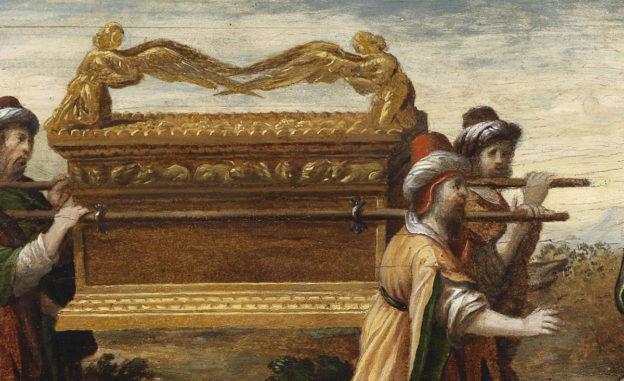Read Exodus 37:1-29
Having somewhere to live is great. But unless you have furnishings, the place appears rather large and bare. It also makes entertaining visitors tricky. Sure, you can eat on the floor, but tables and chairs represent homeliness and welcomeness that a barren surface lacks.
In the previous chapter, we saw how the Israelites began constructing the tabernacle which was God’s dwelling-place with them on earth, pointing to the greater fulfilment in Christ. In this chapter, the Israelite craftsmen are busy building the furnishings for God’s tent, which communicates the welcome that God gives to all who seek his presence.
The first item which the Israelites constructed was the Ark of the Covenant, which was the most important piece of the furniture in God’s House. The Ark sat in the Most Holy Place, the innermost room where God dwelt and only the High Priest could enter, but once a year.
Given its significance, Bezalel himself constructed the Ark rather than delegating it to the craftsmen under his instruction (v.1). The Ark was a wooden box which was covered with gold, due to how close it was to God’s special presence (vv.2-5). It would later contain three items – the stone tablets with the covenant terms, Aaron’s budded rod (symbolising his priestly authority), and a jar of manna (representing God’s provision).
On top of the Ark was a “mercy seat” of pure gold and two cherubim of pure gold which overshadowed it (vv.6-9). The cherubim surrounded God’s throne in Heaven, and so their representation here showed that the mercy seat on top of the Ark was a picture of God’s presence, where God would dwell when he descended to be with his people.
The next item which is listed on the furnishings constructed was the table of the presence. As with the Ark, this was made of wood with gold overlay (vv.10-15). The plates and cups which sat on the table were also forged from gold (v.16).
The table of the presence held the Bread of Presence, which symbolised God’s continued provision for Israel. It also pointed to the ongoing covenant relationship between God and Israel, since it symbolised God communing with his people. This symbol also sits inside our own sacrament of Communion (or The Lord’s Supper) today.
Next on the furnishings list was the lampstand, which held the lamps which lit the tabernacle. Again, the lampstand was made of acacia wood, with gold overlay (vv.17-23). Since the tent’s layers were multiple layers thick, the inside was completely pitch black unless lit. So the lampstand played a very practical purpose.
But it also symbolised God’s light-giving presence with his people. Without it, we all stumble around in the dark. But God’s illumination gives us light and reveals to us the way we should go, so we do not stumble and fall. And because the lampstand was fashioned to look like a tree, it also reminds us that God is the source of life.
The final piece of furniture listed was the Altar of Incense, again made of gold (vv.24-29). The priests offered special fragrances on the altar, which filled the tabernacle with a pleasant aroma. It represented prayers ascending to Heaven, where God hears them and responds. Due to the placement of this altar right near the Ark of the covenant (but in the “outer room” of the tent), the aromas would settle around God’s earthly throne.
All of these items were important for furnishing God’s House, not only because they made it more appropriate for the King of Heaven to move in, but because of what they taught us. All of the items indicate in some way the work of Jesus in saving us from our sins, and enabling us to have a covenant relationship with God.
Firstly, the Ark of the Covenant reminds us of God dwelling with us, which is fulfilled in Jesus’ birth and life. The mercy seat, where the High Priest sprinkled the blood of atonement, reminds us that it is through Jesus’ High Priestly sacrifice of himself and his blood shed for us that we receive mercy from God.
Secondly, the Table of Presence reminds us that everything we have is a gift from God. None more so than the true Bread of Life, Jesus (John 6), who fills our spiritual hunger.
Thirdly, the Lampstand reminds us that Jesus is the light of life, who reveals to us the way of salvation. Through God’s Word, we read of the way in which we should live and Christ’s sacrifice for us, so we may have eternal life.
Fourthly, the Altar of Incense reminds us of Jesus’ prayers for us before he died (John 17), which were raised up to Heaven and heard by God. He continued to intercede for us before God’s throne in Heaven. It also reminds us that through Jesus, God hears our prayers and will consider them. If it is his will, he will grant our prayerful requests!
Through Jesus, we are able to enter into fellowship with God, to enjoy his company, in his furnished house.

